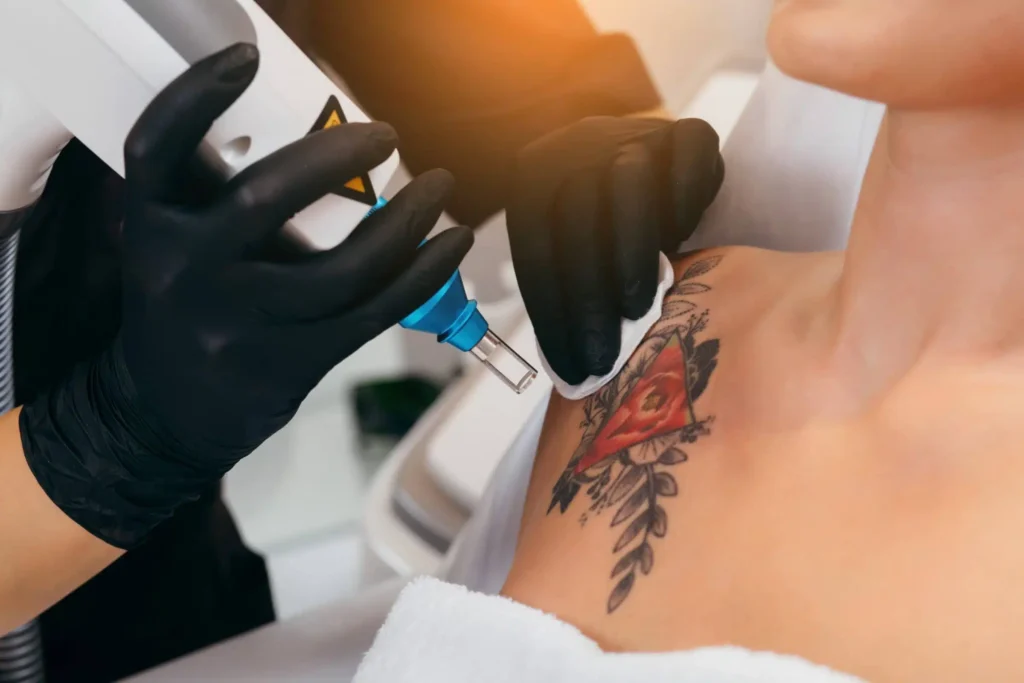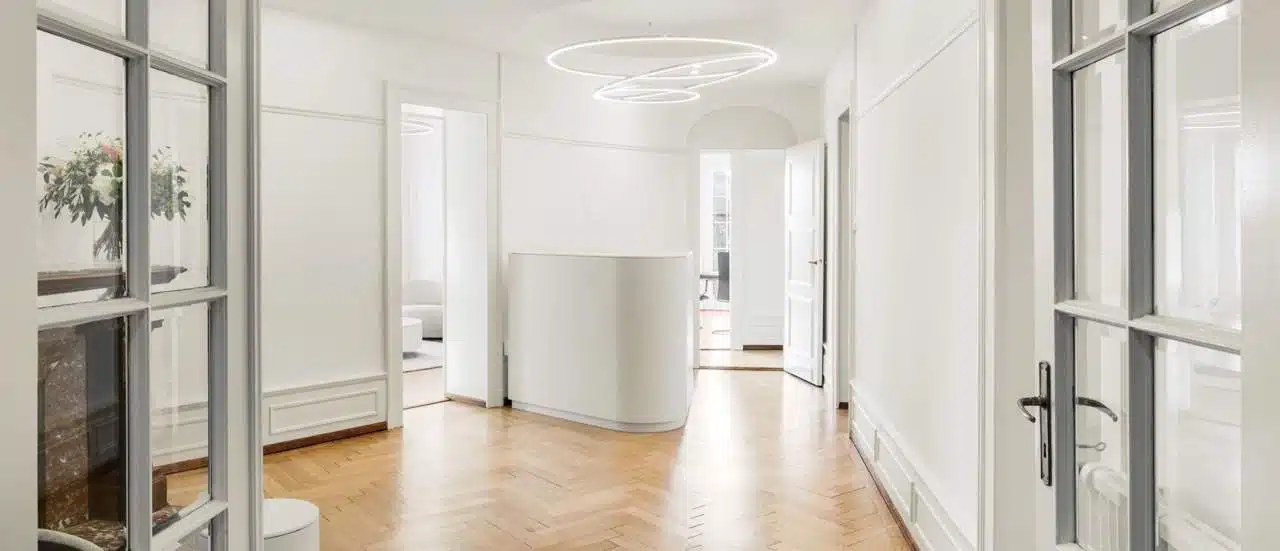What is laser tattoo removal?
Laser tattoo removal is an effective method of removing unwanted tattoos. The principle is simple. The laser emits a powerful wave. The laser beams target the pigments in the tattoo, breaking them down into smaller particles. The ink disintegrates and the particles are then eliminated naturally by the body. The laser tattoo removal process is based on the principle of selective photothermolysis, which means that the laser heats and breaks up specific pigments in the tattoo while protecting the surrounding tissue.
A session follows this sequence:
- An anaesthetic cream is applied 1 to 2 hours before the session.
- The doctor and patient wear glasses to protect their eyes from the laser’s rays.
- The plastic film is removed.
- The laser sends out its light beams. The pigments gradually detach from the skin.
- A cream and a bandage are applied.
After each laser tattoo removal session, it is important to follow the instructions given by your tattoo remover, such as applying creams or avoiding exposure to the sun.
There are different types of lasers used in tattoo removal, but one of the most advanced is the Laser PicoPlus. Clinique Bellefontaine is equipped with it. It is distinguished by its ability to emit ultra-fast, ultra-short pulses. The pigments in the tattoo are broken down more effectively, and even the most resistant colours are more easily erased.
Who can ask to have a tattoo removed?
Anyone who wishes to remove an unwanted tattoo can request laser tattoo removal, regardless of the reason for their request:
- You’ve changed your mind about your tattoo
- The tattoo is linked to a painful memory
- The tattoo has not aged well
- You have professional opportunities that go hand in hand with a tattoo
Laser tattoo removal is always an effective solution. But it is always essential to consult a qualified professional to assess your tattoo and determine whether you are a good candidate for the procedure. While tattoo removal is effective on all skin phototypes, from the lightest to the darkest, some ink colours require special arrangements. For example, pastel colours and all colours that have been mixed with white (pink, turquoise, flesh, etc.) more often than not contain metallic particles that can turn grey after laser treatment. For these specific cases, it is advisable to plan to cover up the light areas with a skin colour or a new tattoo on the area.
How many tattoo removal sessions are needed?
It’s not possible to say exactly how many sessions will be needed, but the best indicators for rapid removal are :
- Tattoo carried out by a professional
- Quality of ink and density of pigments – tattoo made in Europe?
- Dark colour, depth of tattoo, age of tattoo.
If you are one of the right candidates and would like to be completely untattooed, you will need a minimum of 5 to 8 sessions every 6 weeks.
Clinique Bellefontaine uses the revolutionary PicoPlus technology. This laser, the world leader in tattoo removal, reduces the number of sessions required compared with other conventional lasers thanks to its double pass. Its ultra-fast pulses break up tattoo pigments more effectively, and its high power means it can treat a wider range of tattoo colours.
So if you’re looking for optimum tattoo removal, the PicoPlus Laser is the best solution. Tattoo removal is faster, more effective and more complete. No more worries: it’s now easy to get back to tattoo-free skin and feel comfortable in your own body again.


